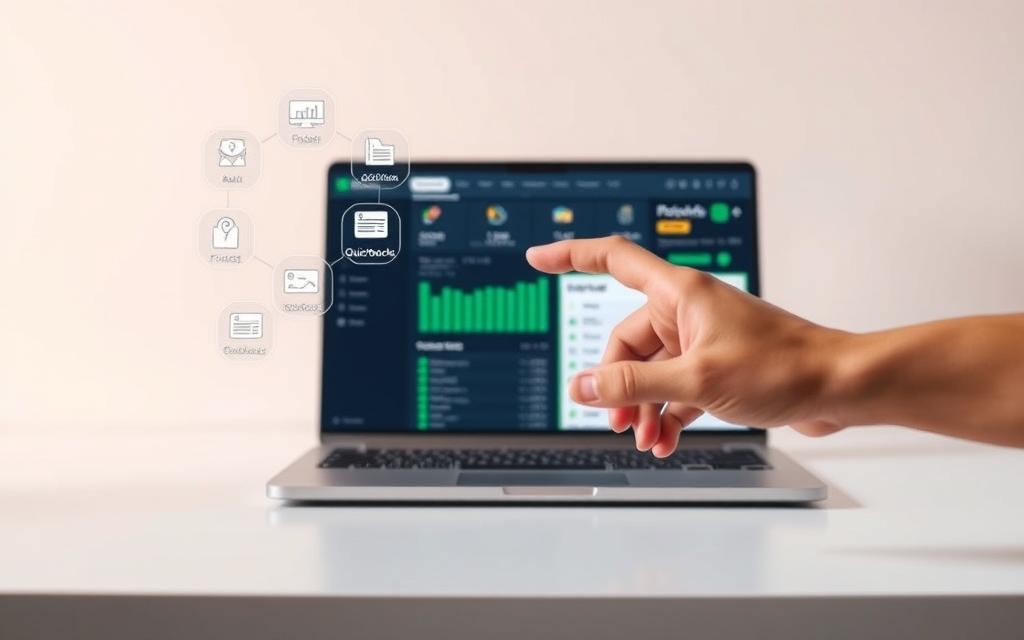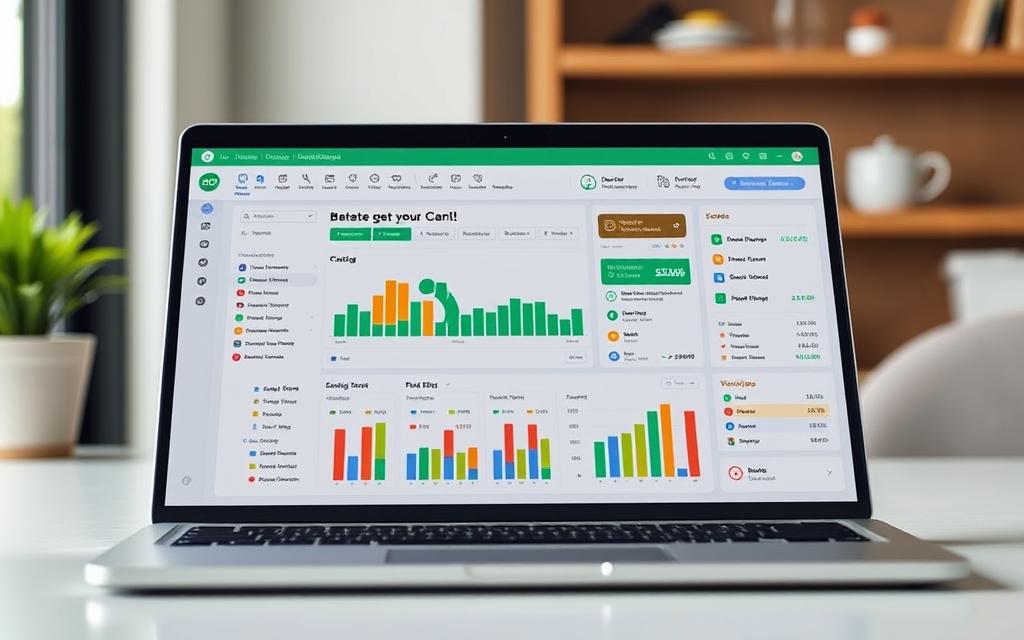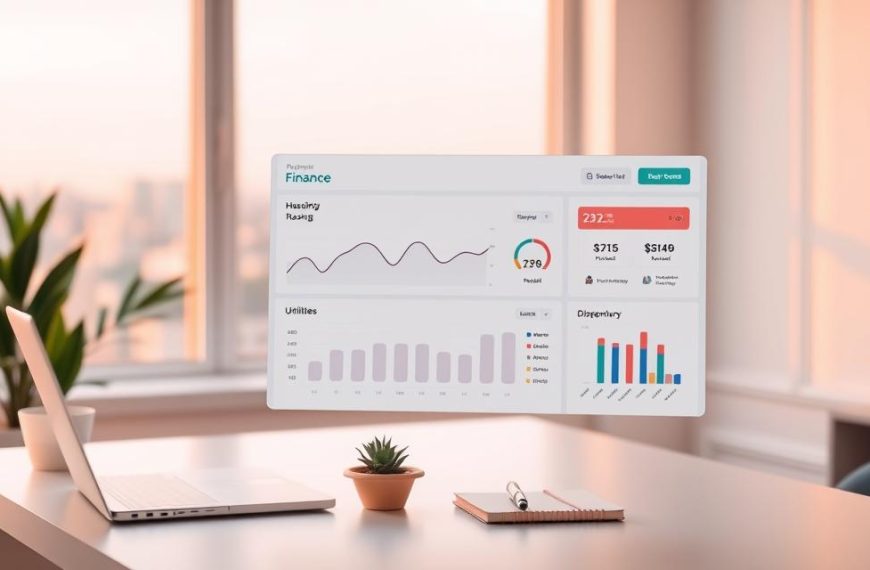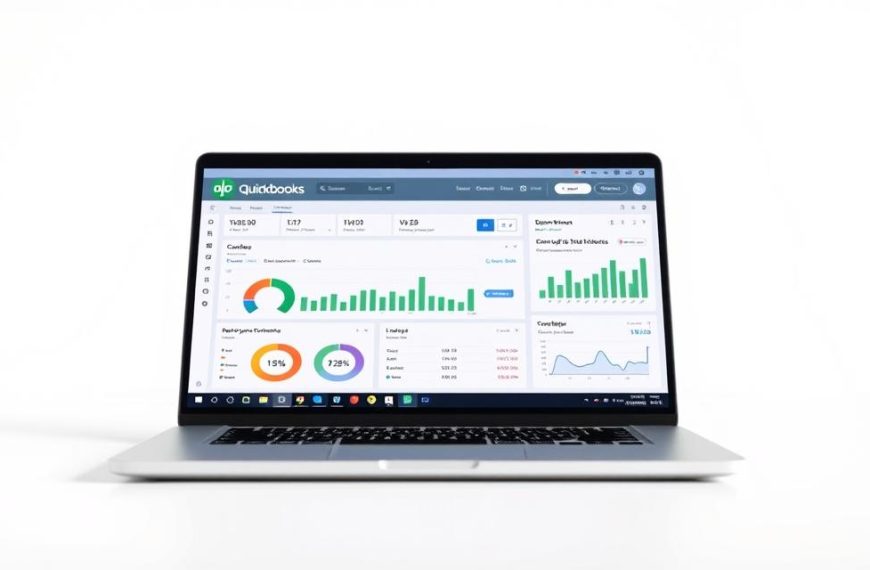Managing personal finances effectively is crucial in today’s fast-paced world. QuickBooks, a renowned accounting software, offers a robust solution for individuals to track their expenses, income, and investments in a centralised platform.
By adapting QuickBooks for personal financial management, individuals can streamline their financial data, categorise transactions, and create budgets. This comprehensive guide will walk you through setting up QuickBooks for your personal needs, leveraging its powerful tools for financial management, and making informed decisions about your financial future.
With its advanced features, including budgeting, expense categorisation, and financial reporting, QuickBooks emerges as a versatile tool for managing your finances. This guide is designed for both beginners and those familiar with QuickBooks, aiming to extend its application beyond business accounting.
Understanding QuickBooks for Personal Finance
QuickBooks is not just for businesses; it offers a robust tool for personal finance management that can simplify financial tracking. With its comprehensive features, individuals can efficiently manage their finances, track expenses, and create budgets.
What is QuickBooks?
QuickBooks is a finance software that assists with bookkeeping, accounting, payroll, inventory management, and other financial processes. It is a cloud-based, all-in-one software that allows users to access their accounts from anywhere, at any time. Originally designed for businesses, QuickBooks has become increasingly popular for personal finance management due to its robust features and user-friendly interface.
Benefits of Using QuickBooks for Personal Finances
The benefits of using QuickBooks for personal finances include centralised management of all financial accounts, automated transaction categorisation, and powerful analytical tools that provide insights into spending patterns. QuickBooks’ cloud-based nature means that personal financial information can be accessed from anywhere, at any time, using any device with internet connectivity. Additionally, its integration capabilities allow it to connect with most major banks and credit card providers, enabling automatic transaction imports.
QuickBooks Versions and Pricing
QuickBooks offers several versions with different pricing tiers. The base tier, “Simple Start,” is best suited for personal use and costs approximately £25 per month after an initial discount period. Other versions, such as “Essentials,” “Plus,” and “Advanced,” offer additional features and support multiple users. The choice of version depends on individual needs and the number of users required.
Setting Up QuickBooks for Personal Use
Setting up QuickBooks for personal use requires a strategic approach to ensure it meets individual financial needs. This involves several key steps to tailor the software to your personal financial situation.
Creating a New Company File for Personal Finances
To start using QuickBooks for personal finance, you need to create a new company file. This file should be designated specifically for your personal finances to keep your transactions separate from any business activities. Naming this file appropriately will help you easily identify it within your QuickBooks account. Creating a separate file for personal finances ensures clarity and organisation.
Customising the Chart of Accounts for Personal Use
Customising the Chart of Accounts is crucial for reflecting your personal income sources and expense categories. This involves modifying default account categories to include personal expense types such as groceries, utilities, and entertainment, as well as income sources like salary and investments. Tailoring these accounts to your personal financial situation enhances the accuracy of your financial tracking. You can also create new accounts for specific savings goals or emergency funds.
Tailoring the Dashboard for Personal Finance Management
Tailoring the QuickBooks dashboard allows you to highlight key information relevant to your financial goals, such as budget progress, upcoming bill payments, and account balances. By configuring your dashboard view, you can streamline your financial management activities and make informed decisions about your finances. This customisation enables you to focus on the most critical aspects of your personal finances.
By following these steps, you can ensure that your QuickBooks setup is optimised for effective personal financial management, providing a clear and organised view of your financial situation.
Connecting Your Financial Accounts
QuickBooks allows you to centralise your financial management by connecting your bank accounts, credit cards, and investment accounts. This integration simplifies the process of tracking your expenses and income, providing a comprehensive view of your financial health.
Linking Bank Accounts to QuickBooks
To link your bank accounts to QuickBooks, navigate to the Banking section and select “Link Account.” Follow the secure authentication process to establish a connection with your financial institution. This process ensures that your transactions are updated in real-time, maintaining the accuracy of your financial data.
- Secure login credentials are essential to protect your financial information.
- QuickBooks employs bank-level security measures, including encryption and secure authentication protocols.
Connecting Credit Cards and Investment Accounts
When connecting credit cards to QuickBooks, the system automatically categorises many common transactions, saving time in manual data entry. You can also link your investment accounts to track portfolio performance alongside your everyday expenses and income.

By connecting your financial accounts to QuickBooks, you gain access to a centralised hub for monitoring all your financial activities. This eliminates the need to log into multiple platforms to check balances or transactions. QuickBooks provides options for manual transaction entry or CSV file imports for accounts that cannot be automatically linked, ensuring comprehensive financial tracking.
Categorising and Tracking Personal Transactions
QuickBooks enables you to categorise and track personal transactions effectively, laying the groundwork for comprehensive financial analysis. By leveraging the software’s capabilities, you can gain a deeper understanding of your financial situation and make informed decisions.
Setting Up Personal Income Categories
Setting up personal income categories allows you to track various revenue streams separately, such as primary employment, freelance work, investment dividends, rental income, and other sources of funds. This helps in understanding the composition of your income and identifying areas for potential growth.
Creating Expense Categories for Personal Budgeting
Creating detailed expense categories tailored to personal budgeting helps you understand exactly where your money goes. Common categories include housing, transportation, groceries, dining out, entertainment, healthcare, and savings. By categorising your expenses, you can identify areas where you can cut back and allocate funds more efficiently.
Automating Transaction Categorisation
QuickBooks’ automation capabilities can learn from your categorisation patterns over time, automatically assigning new transactions to appropriate categories based on payee information and transaction amounts. This feature saves time and reduces the manual effort required to manage your transactions.
| Category | Description | Example |
|---|---|---|
| Housing | Rent/Mortgage, Utilities | £800/month |
| Transportation | Car Loan, Insurance, Fuel | £300/month |
| Groceries | Food, Household Items | £500/month |
By categorising and tracking personal transactions effectively, you can gain valuable insights into your spending patterns and make informed decisions about your financial resources. Consistent use of QuickBooks for personal finance management can lead to better financial health and stability.
How to Use QuickBooks for Personal Finance Budgeting
With QuickBooks, you can create a detailed personal budget that aligns with your financial goals. Budgeting is a crucial aspect of managing your personal finances, and QuickBooks provides the necessary tools to make informed financial decisions.
Creating a Personal Budget in QuickBooks
To create a personal budget in QuickBooks, start by accessing the budgeting feature through the gear icon and settings menu. Here, you can establish a comprehensive financial plan based on your income and anticipated expenses. QuickBooks allows you to create budgets with different time intervals, such as monthly, quarterly, or yearly, giving you flexibility in your budgeting approach.
- Choose ‘Budgeting’ from the ‘Tools’ section in the settings menu.
- Select “Create a Budget” from the Budgeting page.
- Name your budget, choose the financial year, and specify the interval.

Setting Financial Goals and Tracking Progress
The budgeting feature in QuickBooks enables you to set specific financial goals, such as saving for a holiday or reducing debt. You can then track your progress toward these objectives in real-time, using visual budget reports that provide clear indicators of your spending patterns.
Adjusting Your Budget Based on Spending Patterns
QuickBooks allows you to adjust your budget throughout the year based on changing circumstances or spending patterns. This ensures that your financial plan remains relevant and achievable. You can generate budget vs. actual reports to gain insights into your financial discipline and identify areas where adjustments might be needed.
By using QuickBooks for personal finance budgeting, you can transform financial planning into an ongoing process of monitoring and refinement, significantly improving your chances of financial success.
Managing Personal Income and Expenses
Understanding and managing personal income and expenses are fundamental aspects of financial planning. To achieve financial stability, it’s crucial to have a clear picture of your financial inflows and outflows.
Tracking Multiple Income Sources
Managing personal income effectively in QuickBooks requires setting up distinct tracking mechanisms for various income sources, including primary employment, freelance work, investments, rental properties, and passive income streams. The software allows you to create custom income categories that reflect your specific revenue sources, making it easier to analyse which areas of your financial life are most profitable.
Monitoring Regular and Irregular Expenses
Monitoring regular expenses like mortgage payments, utilities, and subscriptions alongside irregular expenses such as home repairs, medical costs, or holiday spending gives you a complete picture of your financial obligations. QuickBooks enables you to keep track of these expenses efficiently, ensuring you stay on top of your financial commitments.
Using QuickBooks Mobile for On-the-Go Expense Tracking
QuickBooks Mobile extends the power of expense tracking to your smartphone, allowing you to capture receipts on the go, categorise expenses immediately after purchase, and maintain accurate records without waiting to get back to your computer. The mobile app’s receipt scanning feature uses OCR technology to extract key information from receipts, automatically creating transaction entries.
By leveraging these features, you can ensure that your financial records are up-to-date and accurate, making it easier to manage your personal finances over time. Setting up recurring transaction templates for regular income and expenses saves significant time and ensures consistent categorisation, improving the accuracy of your financial reports.
Tracking Debts and Loans in QuickBooks
With QuickBooks, users can efficiently manage their debts and loans, gaining better control over their financial situation. This involves setting up specific accounts for loans and credit cards, ensuring that all financial obligations are accurately recorded.
Setting Up Loan Accounts
To set up a loan account in QuickBooks, users should navigate to the “Chart of Accounts” and create a new account, categorising it as either a short-term or long-term liability. This distinction is crucial for maintaining an accurate balance sheet.
Tracking Mortgage and Student Loan Payments
QuickBooks allows users to track mortgage and student loan payments effectively. By recording the initial loan amount, interest rate, and payment schedule, users can monitor their debt obligations and make informed financial decisions.
Managing Credit Card Debt
Managing credit card debt involves connecting credit card accounts to QuickBooks for automatic transaction imports and regularly reconciling balances. This helps users understand the true cost of carrying credit card balances and make necessary adjustments.
| Debt Type | QuickBooks Feature | Benefit |
|---|---|---|
| Mortgage | Separate principal and interest tracking | Understand equity building and tax implications |
| Student Loans | Multiple loan tracking with different interest rates | Implement strategies for accelerated repayment |
| Credit Card Debt | Automatic transaction imports and balance reconciliation | Monitor true cost of carrying balances and adjust spending |
By utilising these features, users can generate reports showing their total debt burden, payment history, and projected payoff dates, providing valuable insights for developing debt reduction strategies.
Generating Financial Reports for Personal Analysis
QuickBooks enables users to produce in-depth financial reports that provide valuable insights into their financial situation. These reports are essential for making informed decisions about personal finances.

Essential Reports for Personal Finance
QuickBooks offers a comprehensive suite of financial reports that can be customised for personal finance analysis. The key reports include:
- Profit and Loss statement: Shows income versus expenses, providing a clear picture of financial performance.
- Balance Sheet: Displays assets, liabilities, and net worth, giving a snapshot of financial health.
- Cash Flow statement: Tracks the movement of money in and out of accounts, helping to manage liquidity.
Analysing Spending Patterns
Spending analysis reports in QuickBooks break down expenses by category, vendor, or time period. This helps identify patterns and areas where spending can be reduced. By analysing these reports, users can make informed decisions about their financial management.
Using Reports for Tax Preparation
QuickBooks’ tax reports categorise transactions according to tax relevance, making it easier to identify potential deductions and prepare accurate information for the annual tax return. This feature simplifies tax preparation and ensures compliance with tax regulations.
By regularly reviewing these financial reports, users can transform their approach to personal finance from reactive to proactive. This enables them to spot potential issues before they become problems and capitalise on financial opportunities.
Conclusion
In the modern financial world, having the right tools for personal finance management is vital. This article has guided you through the process of using QuickBooks for managing your personal finances effectively.
By implementing QuickBooks, you’re taking a significant step towards gaining comprehensive control over your financial situation. The step-by-step approach outlined in this guide helps transform QuickBooks into a powerful personal finance management system tailored to your needs.
The benefits of using QuickBooks for personal finance include automated tracking, simplified tax preparation, and data-driven insights. As your financial situation evolves, QuickBooks adapts, accommodating new income sources and changing expense patterns without requiring a new system.
With QuickBooks, you can make informed financial decisions and keep track of your finances in real-time, even on-the-go, thanks to its mobile capabilities. This adaptability makes QuickBooks one of the most powerful tools available for individuals serious about optimising their financial management.
By dedicating time to setting up QuickBooks for personal use, you’ll be empowered to manage your finances effectively and make data-driven decisions that drive your financial future forward.










